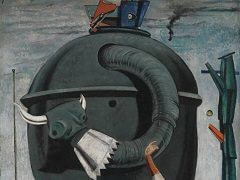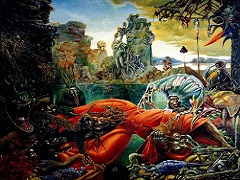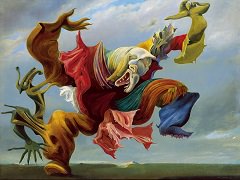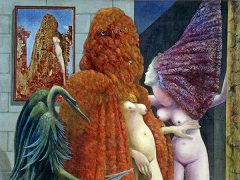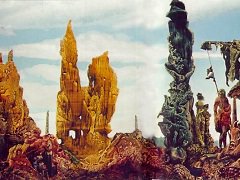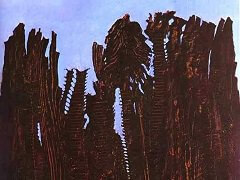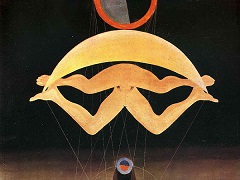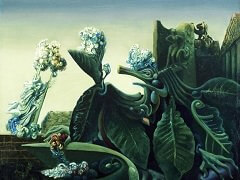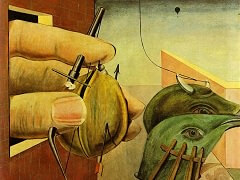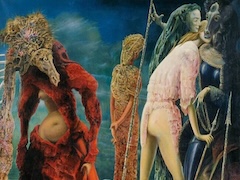The Forest, 1927-28 - by Max Ernst
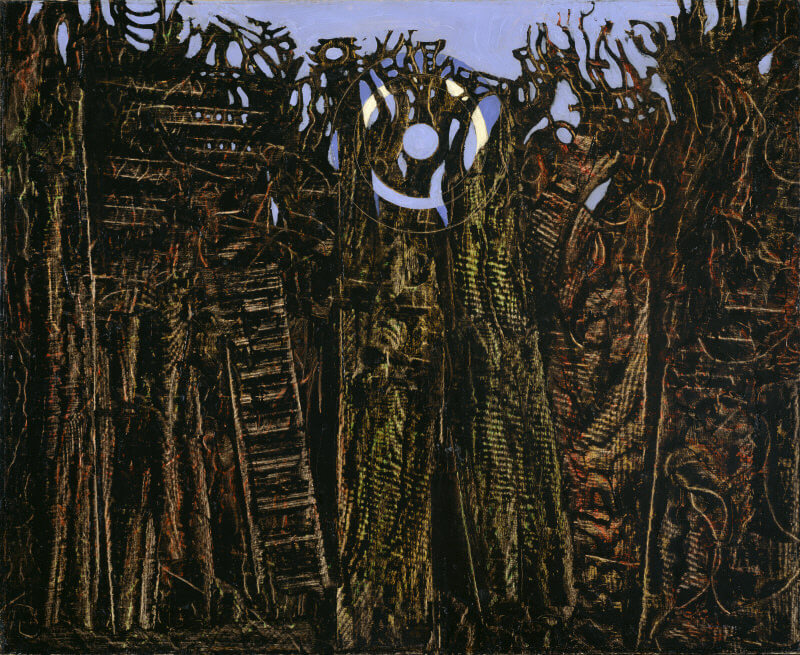
Andre Breton's Surrealist Manifesto of 1924 proclaimed "pure psychic automatism" as an artistic ideal, emphasizing inspiration derived from the chance juxtaposition of forms and the haphazard use of materials. Max Ernst came under the influence of Breton's ideas in 1924, and soon thereafter developed his frottage or rubbing technique. In making his first frottages, he dropped pieces of paper at random on floor boards and rubbed them with pencil or chalk, thus transferring the design of the wood grain to the paper. He next adapted this technique to oil painting, scraping paint from prepared canvases laid over materials such as wire mesh, chair caning, leaves, buttons, or twine. His repertory of objects closely parallels that used by Man Ray in his experiments with Rayograms during the same period. Using his grattage (scraping) technique, Ernst covered his canvases completely with pattern and then interpreted the images that emerged, thus allowing texture to suggest composition in a spontaneous fashion. In The Forest the artist probably placed the canvas over a rough surface (perhaps wood), scraped oil paint over the canvas, and then rubbed, scraped, and overpainted the area of the trees.
The subject of a dense forest appears often in Ernst's work of the late twenties and early thirties. These canvases, of which The Quiet Forest, 1927, is another example, generally contain a wall of trees, a solar disk, and an apparition of a bird hovering amid the foliage. Ernst's attitude toward the forest as the sublime embodiment of both enchantment and terror can be traced to his experiences in the German forest as a child. His essay "Les Mysteres de la foret," published in Minotaure in 1934, vividly conveys his fascination with the various kinds of forests. The Forest resonates with those qualities he identified with the forests of Oceania:
They are, it seems, savage and impenetrable, black and russet, extravagant, secular, swarming, diametrical, negligent, ferocious, fervent, and likeable, without yesterday or tomorrow. . . . Naked, they dress only in their majesty and their mystery".

